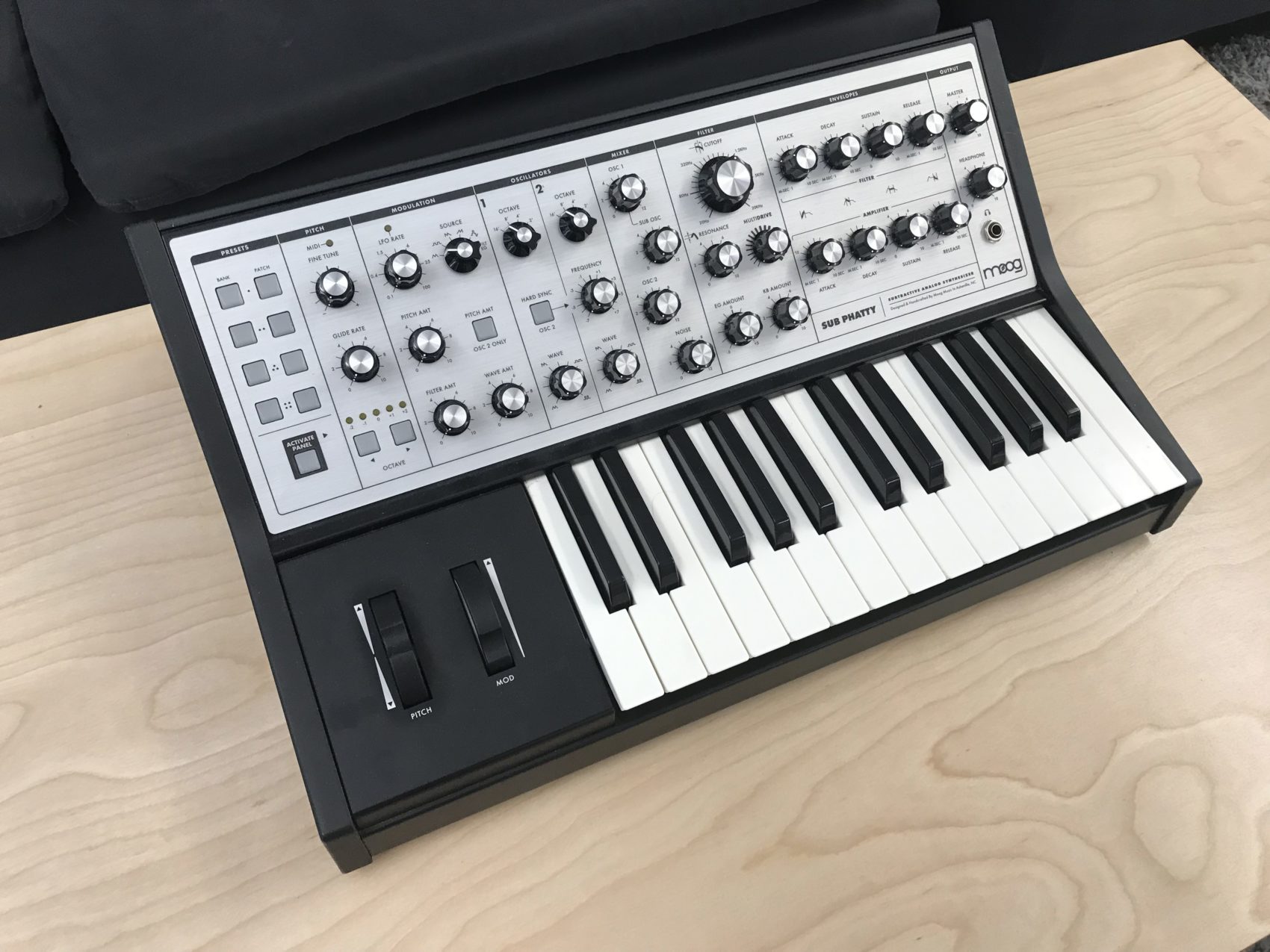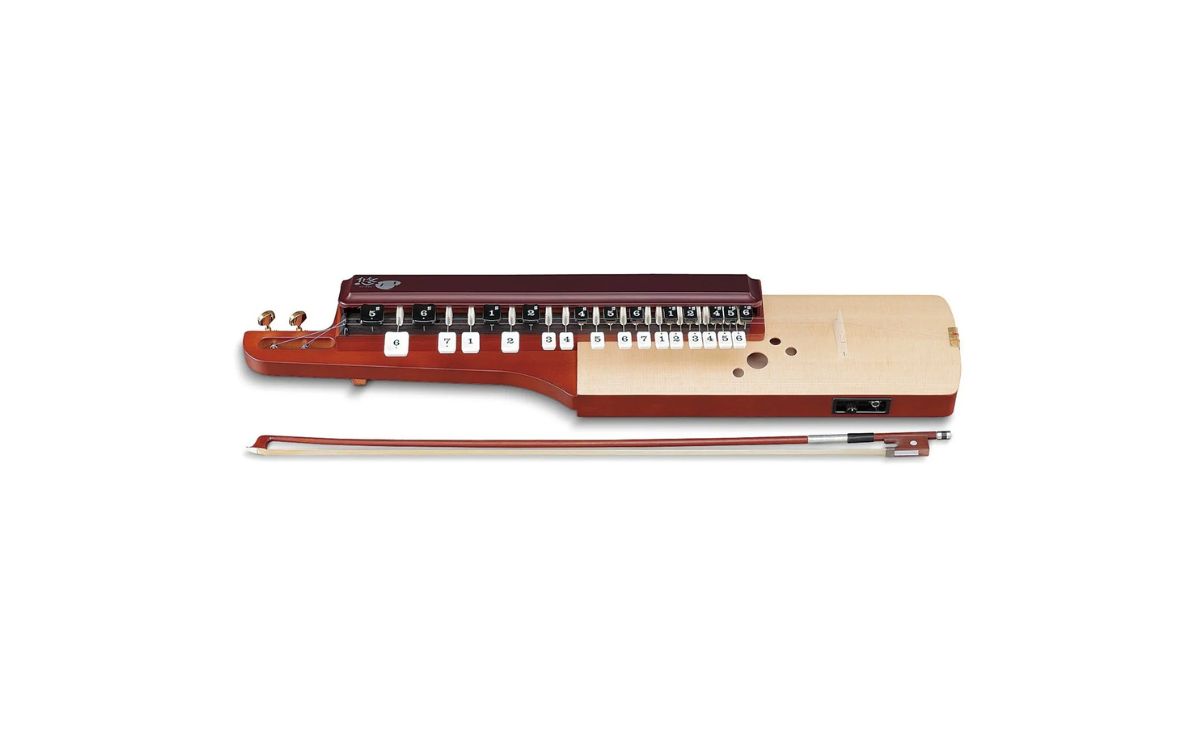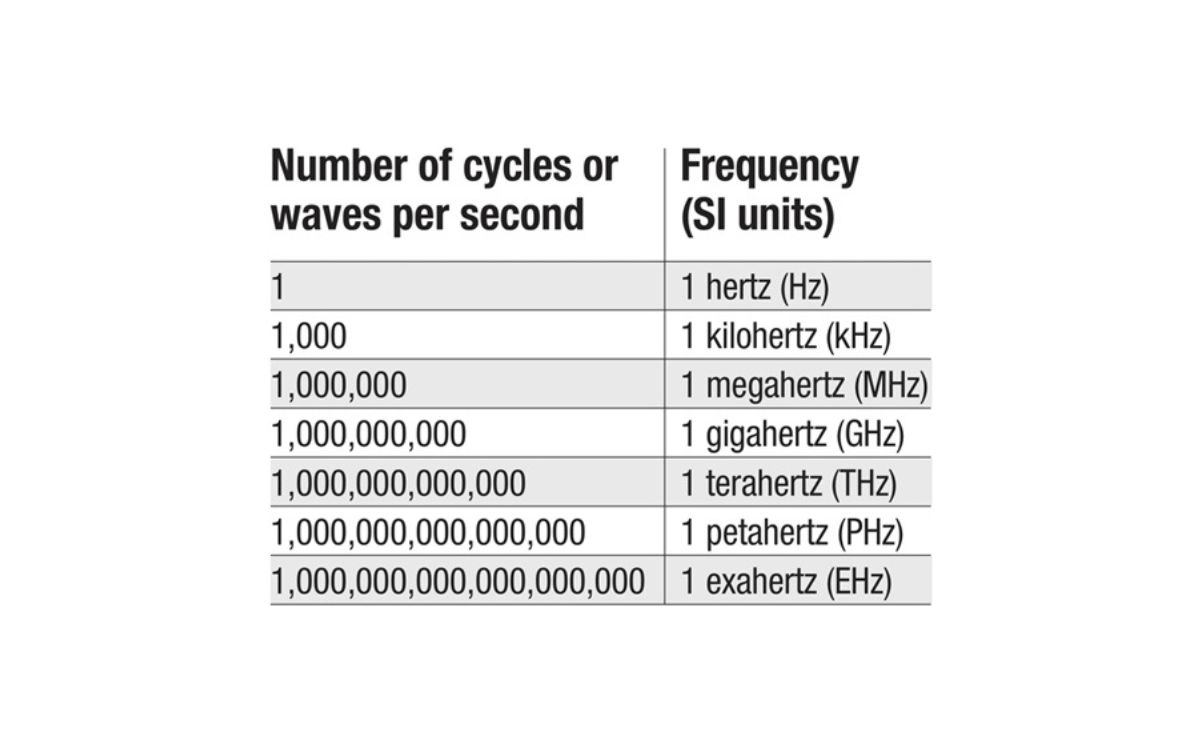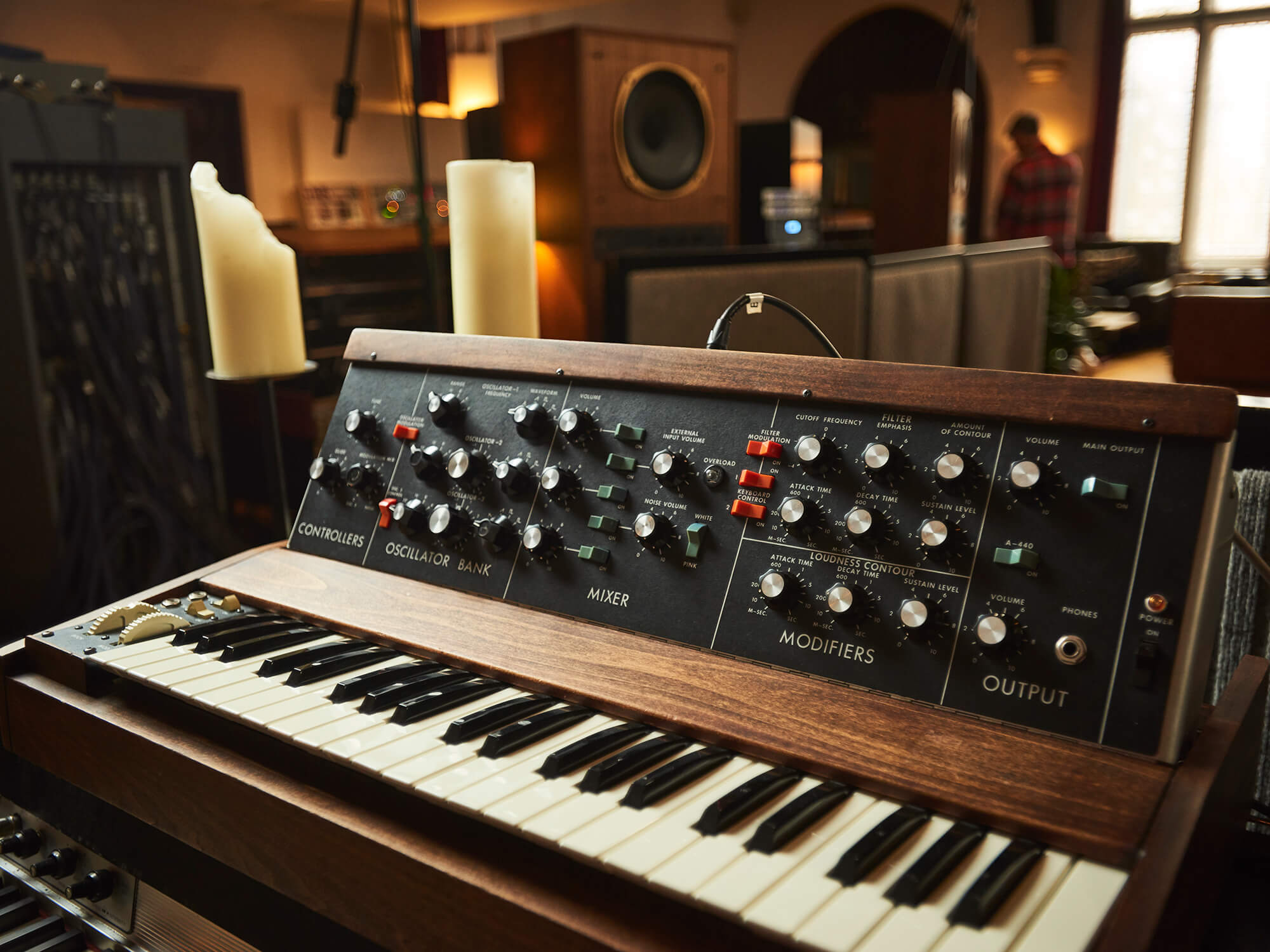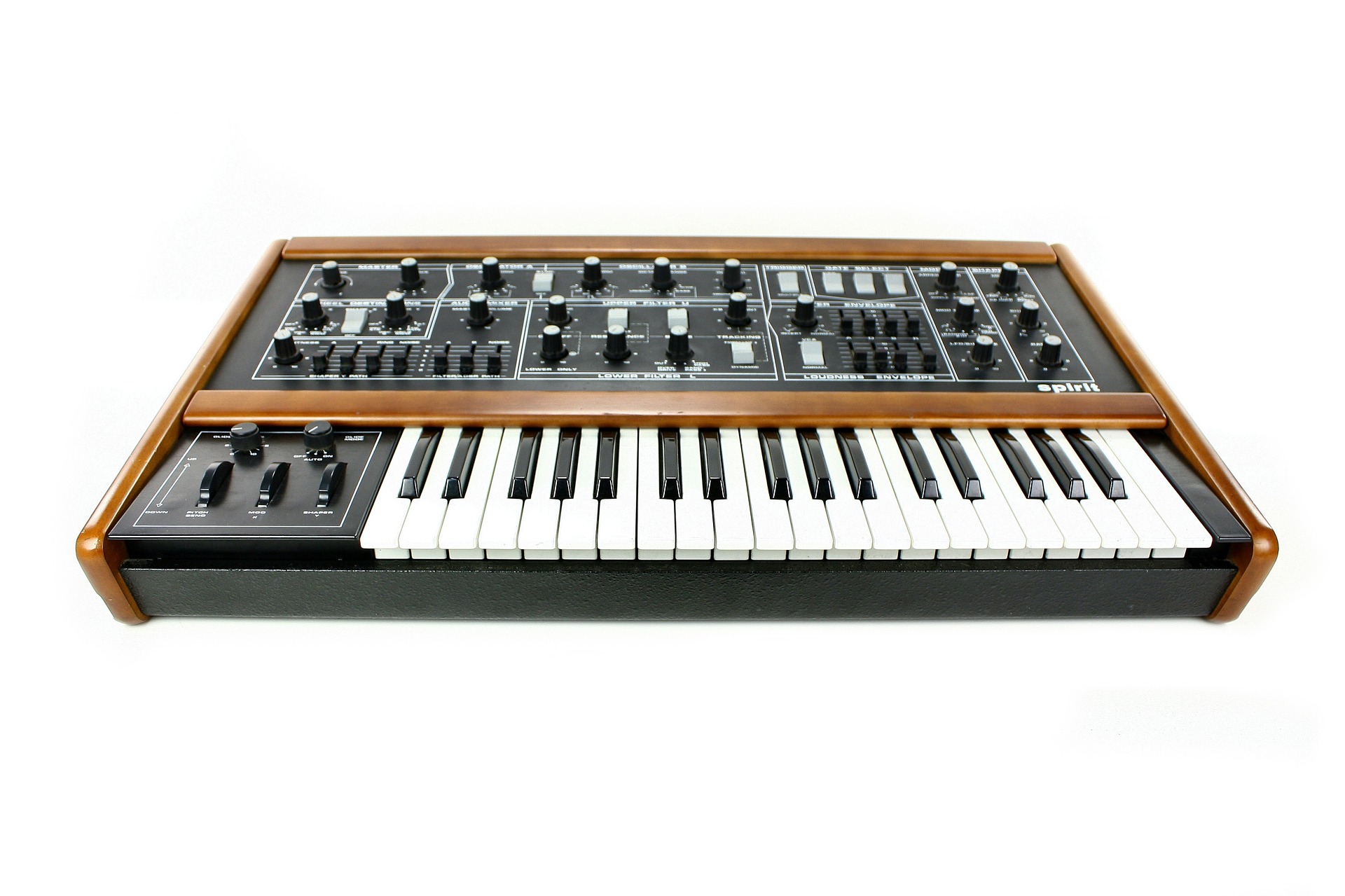Home>Instruments>Synthesizer>What Is The Function Of The Amplifier In A Synthesizer
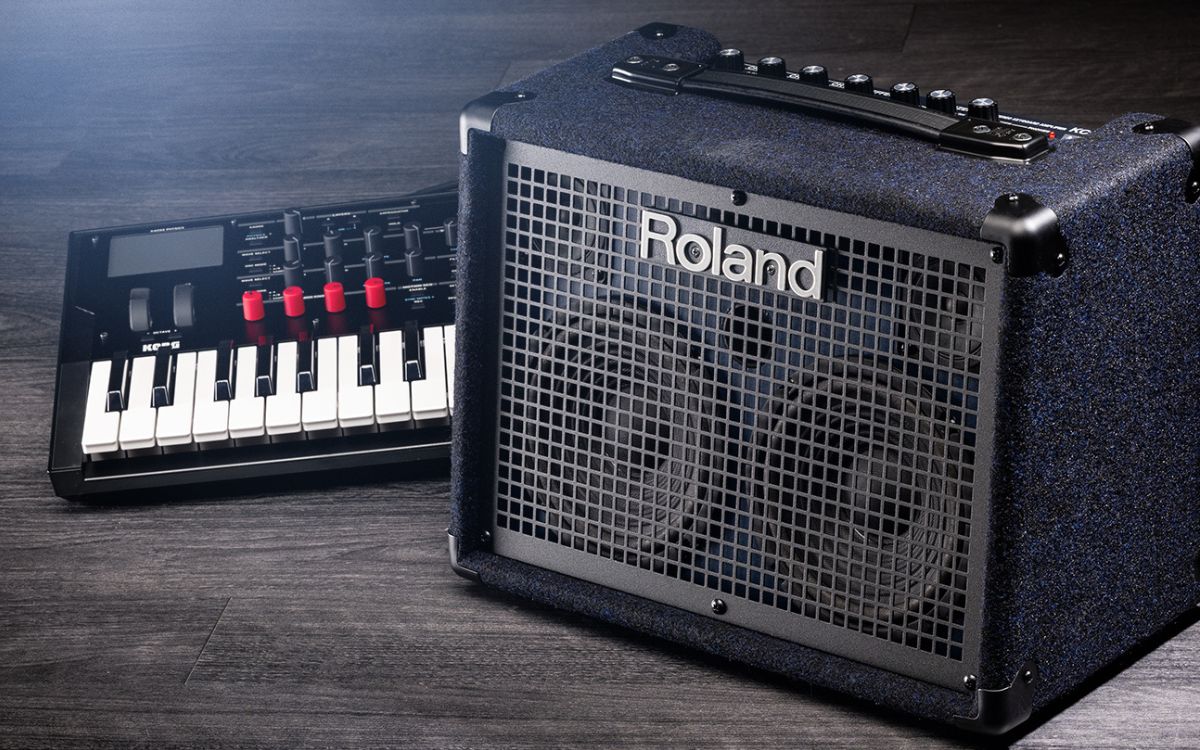

Synthesizer
What Is The Function Of The Amplifier In A Synthesizer
Published: December 12, 2023
Discover the essential role of the amplifier in a synthesizer and how it shapes the sound of this versatile musical instrument.
(Many of the links in this article redirect to a specific reviewed product. Your purchase of these products through affiliate links helps to generate commission for AudioLover.com, at no extra cost. Learn more)
Table of Contents
Introduction
A synthesizer is an electronic musical instrument that is widely used in various music genres, from pop and rock to electronic and experimental. It is a versatile tool that allows musicians to create a wide range of sounds, from traditional instrument sounds to unique and otherworldly tones.
At the heart of a synthesizer lies the amplifier, an essential component that plays a crucial role in shaping the overall sound and delivering it to the speakers or headphones. The amplifier in a synthesizer takes the electrical signals produced by the various sound-generating components and amplifies them to a level suitable for sound reproduction.
In this article, we will explore the function of the amplifier in a synthesizer, its components, and its application in sound synthesis. We will delve into how the amplifier amplifies signals, mixes and routes them, and controls volume and dynamics. By understanding the role of the amplifier, we can gain a deeper appreciation for the complexity and versatility of synthesizers.
Overview of a Synthesizer
A synthesizer is an electronic musical instrument that generates and manipulates audio signals to create various sounds. It consists of different modules such as oscillators, filters, envelopes, and the amplifier, which work together to produce and shape the desired sound.
The synthesizer operates by generating sound waves with different frequencies, amplitudes, and timbres. The oscillators produce the basic waveforms, such as sine, sawtooth, and square waves, which serve as the foundation for creating different tones. These waveforms are then manipulated using filters to shape the frequency content. Envelopes control the amplitude and modulation of the sound, adding dynamics and movement.
While all these modules play a crucial role in sound synthesis, the amplifier serves as the final stage before the sound reaches the speakers or headphones. It takes the manipulated audio signals and amplifies them to an appropriate level for optimal sound reproduction.
Synthesizers come in various forms, from hardware synthesizers with physical controls to software synthesizers that run on computers or mobile devices. They offer a vast array of features and capabilities, allowing musicians and sound designers to create intricate soundscapes and textures.
Whether used in a studio setting or in live performances, synthesizers have become an indispensable tool in modern music production. With their ability to emulate traditional instruments, generate unique sounds, and push the boundaries of sonic experimentation, synthesizers have revolutionized the way music is created and performed.
Role of the Amplifier in a Synthesizer
The amplifier plays a crucial role in a synthesizer, as it is responsible for taking the electrical signals produced by the various sound-generating components and amplifying them to a level suitable for sound reproduction. It serves as the final stage that boosts the signal and prepares it to be heard through speakers or headphones.
One of the primary functions of the amplifier is to increase the amplitude or volume of the sound. When the synthesizer’s oscillators, filters, and envelopes manipulate the electrical signals, they may reduce the signal level. The amplifier compensates for this decrease and brings the signal back to a listenable level.
In addition to amplification, the amplifier also helps shape the timbre and character of the sound. Different amplifiers have unique sonic characteristics, known as their “tone.” Certain amplifiers can add warmth, brightness, distortion, or other sonic qualities to the sound, enhancing the overall sonic experience of the synthesizer.
An amplifier in a synthesizer is also responsible for providing sufficient power to drive the speakers or headphones. It ensures that the sound is reproduced accurately and faithfully, without distortion or loss of quality. The amplifier must have enough power to handle the demands of different audio signals, from soft and delicate tones to loud and intense sounds.
Furthermore, the amplifier in a synthesizer allows control over the overall volume and dynamics of the sound. Musicians can adjust the volume to complement the other instruments or vocals in a mix and shape the dynamic range to match the desired musical expression. This helps in achieving the perfect balance and intensity for a particular musical composition or performance.
Overall, the amplifier is an integral part of a synthesizer, as it brings the manipulated electrical signals to life by amplifying them and providing the necessary power to drive the speakers. It adds richness, character, and control to the sound, making it an essential component for musicians and sound designers.
Components of an Amplifier in a Synthesizer
The amplifier in a synthesizer consists of several key components that work together to amplify and shape the audio signals. These components ensure that the sound produced by the synthesizer is accurately reproduced and meets the desired sonic qualities.
1. Preamp: The preamp is the initial stage of the amplifier and is responsible for amplifying the weak audio signals coming from the oscillators, filters, and envelopes. It boosts the signals to a level that can be further processed by the subsequent stages of the amplifier.
2. Gain Control: The gain control allows musicians to adjust the amplification level of the signal. It determines the overall volume and provides the means to control the output of the synthesizer. By adjusting the gain control, musicians can achieve the desired balance and intensity in their sound.
3. Tone Controls: Many amplifiers in synthesizers feature tone controls such as bass, midrange, and treble. These controls allow users to shape the frequency response of the sound, enhancing or reducing certain frequencies to achieve the desired tonal balance. By adjusting the tone controls, musicians can sculpt the sound to their liking and make it fit seamlessly within a mix.
4. Power Amp: The power amp is the final stage of the amplifier and is responsible for amplifying the signal to a level that can drive the speakers or headphones. It provides sufficient power to ensure that the sound is reproduced accurately and without distortion, even at high volumes.
5. Output Stage: The output stage of the amplifier interfaces with the speakers or headphones. It ensures that the audio signals are delivered to the output devices with maximum efficiency and fidelity. The output stage may include protection circuits to prevent overloading or damaging the speakers.
6. Feedback Control: Feedback control circuits are often present in amplifiers to regulate the amplification process and ensure stability. They monitor the output signal and provide corrective feedback to maintain the desired amplification characteristics.
These components work harmoniously to amplify and shape the sound signals generated by the synthesizer, allowing musicians and sound designers to control the volume, tone, and overall characteristics of the audio output. Understanding the components of an amplifier in a synthesizer is essential for optimizing its performance and achieving the desired sonic results.
Signal Amplification
Signal amplification is one of the primary functions of the amplifier in a synthesizer. It involves increasing the amplitude or volume of the electrical signals produced by the sound-generating components of the synthesizer. Signal amplification ensures that the manipulated audio signals reach an optimal level for sound reproduction through speakers or headphones.
When sound is generated in a synthesizer, the output signals may be of relatively low amplitude. The amplifier’s role is to boost these signals to a level that is audible and can be heard clearly. By amplifying the electrical signals, the synthesizer ensures that the sound maintains its intended impact and presence.
The process of signal amplification involves increasing the voltage or current level of the input signals. This can be achieved through various amplification techniques, such as voltage amplification or current amplification. The choice of amplification method depends on the specific design of the amplifier circuitry in the synthesizer.
Signal amplification can be controlled using the gain control present in the amplifier. The gain control allows users to adjust the amplification level of the signal to match their preferences or the requirements of a particular musical piece. By increasing or decreasing the gain, musicians can fine-tune the volume and overall balance of the synthesized sound.
It is crucial to note that while amplifying the signal, the amplifier should preserve the integrity and quality of the sound. The amplification process should not introduce distortion, noise, or other unwanted artifacts that could compromise the sound’s clarity and fidelity.
Some advanced synthesizers incorporate multiple amplification stages to achieve higher amplification levels, allowing for greater control over the sound’s dynamics and volume. These multiple stages provide the flexibility to shape and sculpt the audio signals accurately.
Signal amplification is a vital function of the amplifier in a synthesizer. It ensures that the manipulated electrical signals are amplified to an appropriate level for optimal sound reproduction. By amplifying the signals, the synthesizer enables musicians and sound designers to create powerful, dynamic, and expressive sounds that captivate and engage the listeners.
Mixing and Routing Signals
In addition to amplification, the amplifier in a synthesizer also plays a crucial role in mixing and routing signals. These functions allow musicians and sound designers to combine and direct various audio signals to create complex soundscapes.
Mixing: Mixing refers to the process of combining multiple audio signals into a single output. The amplifier in a synthesizer often features multiple input channels, allowing different sound sources, such as oscillators or external audio inputs, to be mixed together. This enables musicians to layer and blend different sounds, creating rich and textured audio compositions. By adjusting the levels of the individual input signals, musicians can achieve the desired balance and blend of sound.
Routing: Routing involves directing audio signals to specific destinations within the synthesizer’s signal path. The amplifier in a synthesizer typically includes routing capabilities, allowing users to send audio signals to various modules and components for further processing. For example, a musician may route a signal to a filter to shape its frequency content, or to an envelope to control its dynamics and modulation. By routing signals, musicians can manipulate and sculpt the sound to achieve the desired sonic results.
Advanced synthesizers often provide flexible routing options, such as patching or matrix routing systems. These systems allow users to freely connect and route audio signals between different modules and components, offering limitless possibilities for sound manipulation and exploration.
Mixing and routing signals within the amplifier of a synthesizer offer musicians and sound designers the ability to create complex and intricate sonic landscapes. By combining and directing different audio sources, they can craft unique and personalized sounds that capture the essence of their musical vision.
Controlling Volume and Dynamics
The amplifier in a synthesizer is responsible for controlling the volume and dynamics of the sound. It allows musicians to shape and modulate the level and intensity of the audio signals, adding depth, expression, and emotion to their music compositions.
Volume Control: The amplifier provides a means to adjust the overall volume of the synthesizer’s output. Musicians can increase or decrease the volume to achieve the desired balance between different instruments or elements in a musical arrangement. This control enables them to create dynamic contrasts and shape the overall sound mix.
Dynamics Control: The dynamics of a sound refer to the variation in volume or intensity over time. The amplifier allows musicians to control the dynamics by adjusting the attack, decay, sustain, and release stages of an envelope generator. This control over the signal’s dynamics helps shape the character and expressiveness of the sound. For example, a fast attack and quick decay may create a punchy and percussive sound, while a slow attack and long sustain can produce a smooth and lingering tone.
The ability to control volume and dynamics is vital in music production and performance. Musicians can use these controls to emphasize certain parts of a composition, create tension and release, or evoke specific emotions. By modulating the volume and dynamics, they can add a human-like touch to the synthesized sounds, making them more expressive and engaging.
Furthermore, the amplifier ensures that the volume and dynamics are delivered accurately and faithfully to the speakers or headphones. It minimizes distortion and maintains the integrity of the sound signals, even when they are subjected to high levels of amplification.
This level of control and precision over volume and dynamics allows musicians to create a wide range of musical effects and expressions. It enables them to shape the sound according to their artistic vision and deliver captivating performances that resonate with their listeners.
Application in Sound Synthesis
The amplifier in a synthesizer plays a crucial role in sound synthesis, allowing musicians and sound designers to create a vast array of sounds and textures. Its application in sound synthesis goes beyond simple amplification and encompasses various techniques and processes to shape and manipulate the audio signals.
One of the primary applications of the amplifier in sound synthesis is to shape the tonal characteristics of the sound. By adjusting the amplifier’s gain and tone controls, musicians can add warmth, brightness, or distortion to the sound, giving it a unique sonic character. This ability to shape the tone allows synthesizers to emulate traditional instruments or create entirely new and innovative sounds.
The amplifier is also instrumental in applying modulation effects to the sound. By controlling the gain and dynamics with envelopes and LFOs (low-frequency oscillators), musicians can create effects such as tremolo, gating, and sidechain compression. These effects add movement, rhythmic variations, and dynamic expressions to the synthesized sound.
In sound design and experimental sound synthesis, the amplifier opens up possibilities for creating complex and evolving sonic landscapes. By routing signals through multiple amplification stages, musicians can achieve intricate and layered sounds with evolving textures and dynamics. This technique allows for the creation of evolving pads, drones, and soundscapes that can transform and evolve over time.
Additionally, the amplifier’s ability to mix and route signals is essential for creating multitimbral and polyphonic sounds. In multitimbral synthesis, different sounds or parts can be assigned to separate channels and combined in the amplifier section to create a cohesive and full-bodied mix. Similarly, in polyphonic synthesis, the amplifier can handle multiple voices simultaneously, allowing for expressive and complex chord progressions.
Moreover, the amplifier in a synthesizer can be used creatively to produce sound effects. By manipulating the gain and dynamics in unconventional ways, musicians can achieve distorted, glitchy, or heavily processed sounds that add an experimental and avant-garde touch to their compositions.
The application of the amplifier in sound synthesis is vast and diverse, making it an essential component for musicians, sound designers, and electronic music producers. Its ability to shape and manipulate the audio signals allows for endless possibilities in sound creation and expression, contributing to the sonic landscapes of various music genres and artistic endeavors.
Conclusion
The amplifier is a crucial component in a synthesizer, playing a vital role in shaping and delivering the sound. It serves as the final stage that amplifies the electrical signals generated by the various sound-generating components, ensuring optimal sound reproduction through speakers or headphones.
Throughout this article, we have explored the function of the amplifier in a synthesizer. We have discussed its role in amplifying the signals, shaping the tonal characteristics, controlling volume and dynamics, and mixing and routing the signals to create complex soundscapes.
The amplifier in a synthesizer not only amplifies the signals but also adds its own sonic flavor. With tone controls, it allows musicians to shape the frequency response of the sound, enhancing or reducing specific frequencies for a desired tonal balance. The amplifier’s impact on the sound extends beyond mere amplification, allowing musicians to add warmth, brightness, or distortion, giving the sound a unique character and personality.
The ability to control volume and dynamics is also significant, as musicians can shape the expressive qualities of the sound. Adjusting the attack, decay, sustain, and release stages of the envelope generator allows for variations in volume and intensity over time, creating dynamic and emotionally compelling performances.
Furthermore, the amplifier’s role in mixing and routing signals enables musicians to combine and direct different audio sources, shaping the overall sound mix and creating intricate sonic textures. Whether through multitimbral synthesis or polyphonic capabilities, the amplifier helps achieve cohesive and full-bodied sounds.
In conclusion, the amplifier in a synthesizer is a vital component for musicians, sound designers, and electronic music producers. It amplifies, shapes, and delivers the sound, allowing for creative expression, tonal control, and dynamic performances. Its application in sound synthesis offers a plethora of possibilities, enabling musicians to create a wide range of sounds, from traditional instrument tones to innovative and experimental textures.
The amplifier in a synthesizer truly brings the synthesized sound to life, adding depth, character, and impact. With its essential functions of signal amplification, tone shaping, volume and dynamics control, and signal mixing and routing, the amplifier provides musicians with the tools to create unique and captivating sonic experiences.

